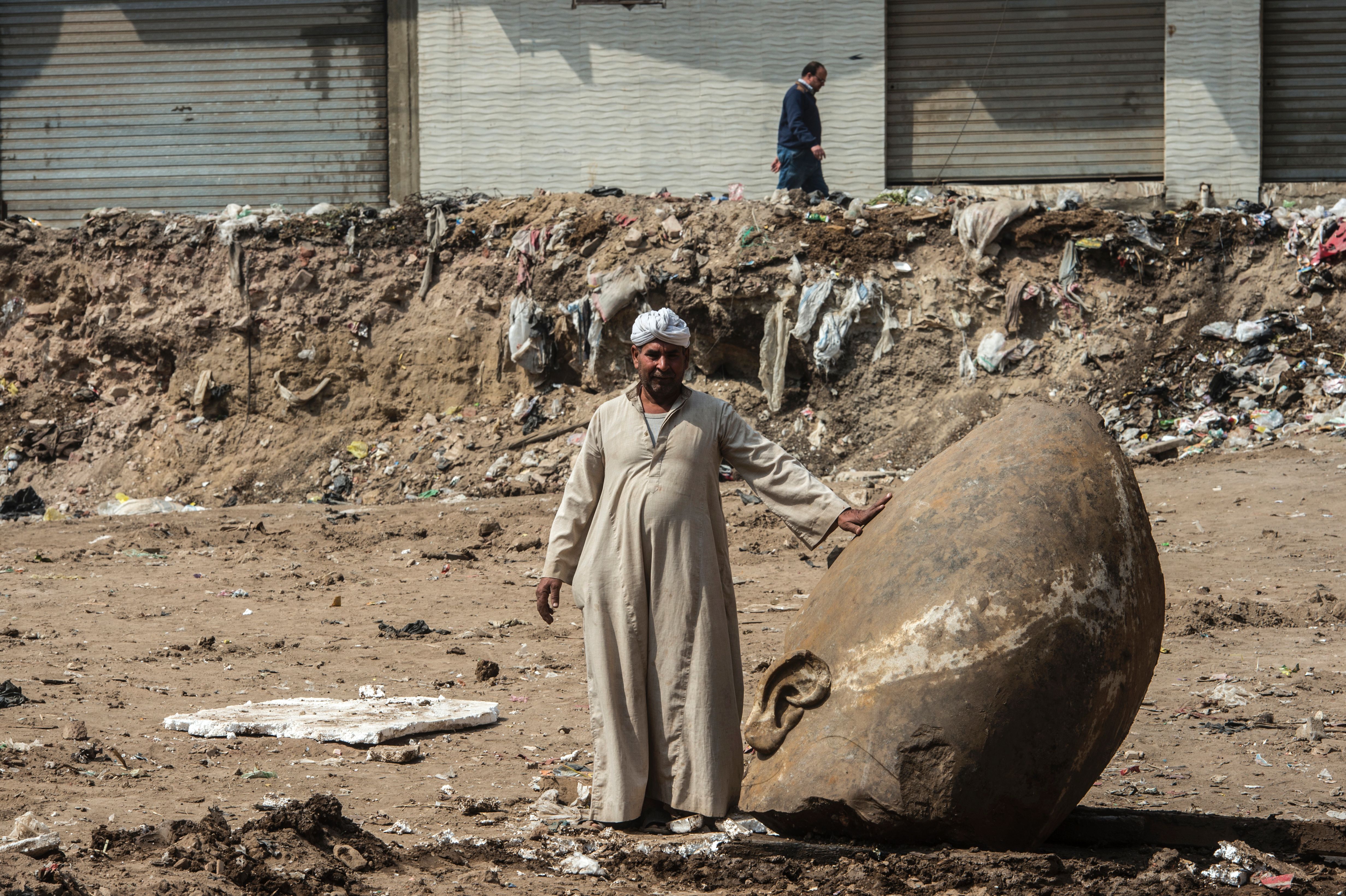
German and Egyptian archaeologists have uncovered a monumental Egyptian statue, over 3,000 years old, in an empty lot in the middle of Cairo, reports Agence France Presse, describing the site of the find as a “wasteland between crumbling apartment blocks.”
“It is one of the most important excavations in Egypt,” said archaeologist Salima Ikram, a professor of Egyptology at the American University in Cairo, speaking to Reuters, calling the discovery “spectacular” and characterizing the artifacts as “astonishing.”
An excited Antiquities Ministry revealed that the works, a 26-foot-tall colossus made of quartzite, likely depicted the pharaoh Ramses II, who ruled during the 19th dynasty (1314–1200 BC). Also known as Ramses the Great, he was the inspiration for Percy Bysshe Shelley’s famous 1818 sonnet “Ozymandias.”
A second work, a life-size statue made of limestone, reportedly featuring Seti II, a 12th-century BC ruler and Ramses’s grandson, was also uncovered.
A quartzite colossus, possibly of Ramses II, and limestone bust of Seti II are seen after they were discovered at the ancient Heliopolis archaeological site in Matareya area in Cairo, Egypt on March 9, 2017. The statues were found in parts in the vicinity of the King Ramses II temple, in the temple precinct of ancient Heliopolis, also known as Oun, by a German-Egyptian archaeological mission. Courtesy of Ibrahim Ramadan/Anadolu Agency/Getty Images.
The news media joined archaeologists, government officials, and local residents as a German and Egyptian team used a forklift to raise the statue’s giant head out of a muddy puddle. The photos reveal a surprisingly casual scene, with men casually touching and even standing on the ancient artifacts.
The Mattarya district, where the dig is taking place, may be a working-class neighborhood today, but it was the Pharaonic city of Heliopolis in ancient times. Ikram described it as “one of the most important religious places in ancient Egyptian history,” and the birthplace of Egyptian mythology and civilization as we know it.
Egyptian minister of antiquities Khaled el-Anani poses for picture with workers next to the head of a statue at the site of a new discovery by a team of German-Egyptian archeologists in Cairo’s Mattarya district on March 9, 2017. Courtesy of Khaled Desouki/AFP/Getty Images.
“The discovery of the two statues shows the importance of the city of Heliopolis, which was dedicated to the worship of Ra [the sun god],” said Aymen Ashmawy, leader of the Egyptian archaeological team, in a statement.
The sculptures were likely created for the city’s sun temple, one of the largest of ancient times, which was destroyed during the Greco-Roman era.
Transporting the massive artworks will be a challenge, but the archaeologists plan to transfer them to a restoration facility as soon as possible. The tentative plan is to have the massive works greet visitors to the the long-delayed Grand Egyptian Museum when it opens in 2018.